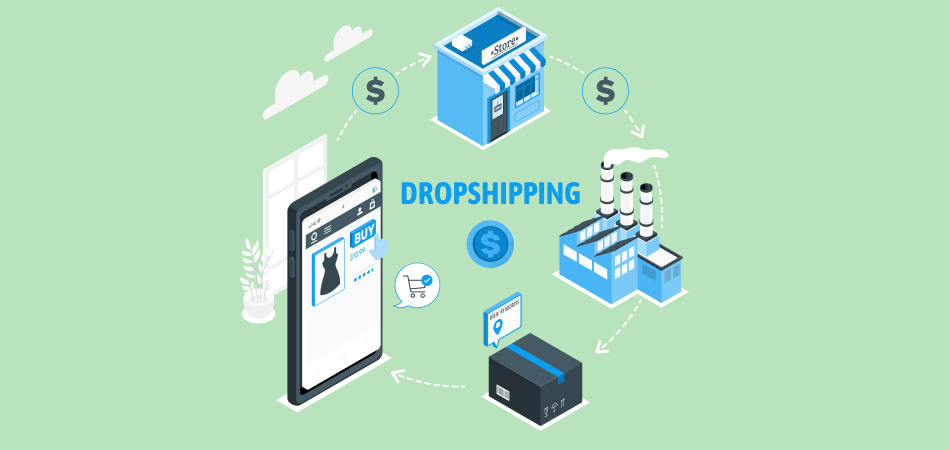How to Start an Online Boutique: All You Need to Know

Starting an online boutique doesn’t require something too complicated for fashion enthusiasts today. However, any business will meet the difficulties and need the expertise to execute.
So now, let's go deep into this post to discover how to start an online boutique and things you need to know about the online boutique.
What Is an Online Boutique
Boutiques are distinct from stores, despite the widespread notion that this is the case. As a rule of thumb, they're much smaller and specialize in one or two specific products—typically fashion, jewelry, or accessories. However, a store's inventory of generic products is significantly greater and is replenished more often.
As a result, an online boutique is an eCommerce business that offers a selected product range to a specific clientele. A boutique may offer things made by the company owner or purchased from a supplier. The input funnel, sales, payment, and customer service operations are carried out on a digital platform, also known as an online.
Why Start an Online Boutique
Independence: To begin, you might utilize your aesthetic abilities. A creative individual with a fashion sense might benefit from their ability to share their style with others. With your style in mind, you may provide your website visitors access to a new look that they can tailor to their own needs. As a result, you will provide value to the community while becoming an influencer.
Profits: Second, you will, of course, be beneficial. Your boutique may provide a consistent stream of revenue. Keeping your target audience engaged and attracting new consumers requires continual work, but fantastic things may happen if you do. You may, for example, recruit a client base that is both loyal and active enough to make your income predictable and sustainable.
What Does It Take to Get an Online Boutique off the Ground
It's a common question for anyone planning to establish an online business. When it comes to creating an online boutique, we can split it into two categories: technical expenses and operations costs.
The Technical Expenses
Internet business will always need a platform to make sales on. The website and its accompanying fees are the most fundamental foundation we must construct.
Domain name: First of all, to establish an online boutique, you will need a website or URL, which is often referred to as a domain name. A domain name typically costs between $0.99 and $15 per year, depending on the sort of extension. To protect your brand, it is safer to purchase a variety of domain name extensions.
Hosting: In the case of a website, this is the amount you pay to have it hosted on the server of a hosting company. Regardless of which eCommerce hosting you choose, the prices vary. On a monthly basis, this might cost anything from $4 to $200. It is necessary for your website to be linked to the internet for customers to be able to access it.
Website design: If you want your consumers to have a positive experience on your website, then you need to ensure that it is well-designed. In order to keep clients happy throughout the shopping process, make sure that your website has an appealing, logical, and speedy interface.
The Operations Costs
Inventory: You can't sell anything if your online boutique isn't filled with inventory. To optimize control and profitability, it is better to purchase and store the things yourself, or you may try dropshipping model. Dropshipping is the practice of having a manufacturer or supplier deliver your purchased items straight to your clients (after purchasing them through your website).
Hiring employees: A new online boutique may save money by operating everything themselves, including customer service, advertising, replying to consumers, and liquidating merchandise. However, this will leave you exhausted and unable to think creatively about style, which will place you behind in the competition. As a result, you should think about adding potential staff to your team to guarantee that everything runs properly.
How to Start an Online Boutique in 7 Steps
To start an online boutique, it necessitates the development of a detailed strategy that includes precise measures to guarantee that your company functions properly. Let's take it to step by step with the following process.
Step 1: Choose Your Niche
As previously said, the online boutique, instead of the store, focus on a certain niche market. Select a specific product rather than a broad category. Instead of offering generic women's clothing, focus on workwear for oversized women. This will allow you to concentrate on individual clients while ensuring corporate efficiency.
The products you choose should be a mix of what you enjoy, what you understand, and what the market wants. Choose the product about which you are most knowledgeable and whether it is truly of interest to customers. It is easy to lose money if you offer a product solely because you enjoy it without considering the market.
Use internet technologies, most notably Google, to measure and investigate the market. Before starting an online shop, you may utilize Google Trends to get insights into what is popular with customers. For example, searches for plus-size apparel are booming, so you may want to start there before branching out to other areas of interest.
Step 2: Prepare a Detailed Business Plan
After you've identified your specialty, you should begin developing a business plan for your online boutique to ensure that you have a plan to take your idea from concept to profit. Sure, it may not seem to be the most enjoyable task, but it is a crucial component of ensuring your success.
Don't overlook this step in your launching an online boutique checklist. Using a SWOT analysis:
- What does my boutique do?
- What are the boutique's strengths and weaknesses?
- What are the boutique's core values?
- Who is my intended audience?
- Who are my rivals?
- How much money can this boutique make?
Also, to keep your plan fiscally balanced, make sure it includes budget specifics. Specific milestones for launching an online boutique should be covered as well. For example, the first month will cover what works and how much money is allocated. What is the predicted income two months later, what is the capital turnover ratio,...
Step 3: Find a Supplier
It's time to start filling your shop with fantastic things now that your business strategy guides you. Even if you're creating your own products, you'll need to get aid from other manufacturers if you want to grow your business.
With the support of a trustworthy vendor, you may better manage your business's work-life balance. In addition, having more staff implies that your successful online boutique will have more options to grow.
Make sure you find a source for the components you need to make your products, as well as a company that can distribute those products to your clients for you. If you have a fulfillment center working for you, starting an online boutique is simpler.
Step 4. Build Your Brand
Let's get started on establishing the brand when we've finalized all of our tactics and materials. The brand will contain many things: a logo, name, picture, slogan,...and prominent personality being shown synchronously across all digital channels where your online boutique will be available. A successful brand needs an eye-catching logo, a memorable name, and an appealing color palette. Fortunately, with the aid of internet tools, you can develop these branding elements on your own.
If you're short on time, freelancers on sites like Upwork and Fiverr may assist with things like logo design and brand films.
Step 5. Fulfill Legal Requirements for Your Boutique
When breaches arise, business registration will assist you in obtaining state guarantees, particularly on internet operating platforms. Managing your company's legal needs and regulations is similar to creating a business strategy.
It's not always entertaining, but if you want to prevent issues in the future, you need to learn this aspect. Any business you establish must be fully aligned with your location's appropriate legislation and laws. To protect your name and logo, you'll need to register your company and maybe file for trademarks.
Some of the legal criteria you'll need to consider are:
- Permits, licenses, and registration for businesses.
- Returns on sales and business taxes.
- Requests for copyright, patents, and trademarks.
- VAT and additional business expenditures.
- Types of businesses include limited liability companies, sole proprietorships, etc.
Remember the legislation governing the registration of your company will change depending on the state in which you operate your boutique. Before you check-in for your online store, be sure you've done your homework.
Step 6. Design Your Boutique
You'll need a website that attracts visitors and encourages them to peruse the rest of your offerings.
The ideal method to showcase your products and make it as simple as possible for visitors to make purchases is to use a website builder or one of the hundreds of WordPress themes specifically designed for online businesses.
In addition to photographs and descriptions of your products, you'll want to include a page on your website explaining your shipping and return policy. If you're selling clothing, you'll need a sizing chart and a contact form.
Another headache after designing your online boutique is to import your product information on that online store page. Even if you start your online boutique on WooCommerce or other platforms like Shopify, you can use many apps like DSers to import your products to your online store. It was designed to make the entire dropshipping process for e-commerce businesses more efficient. Go to the DSers after setting up your boutique and start importing products you want to sell.
| Get Started Now to Grow Your Online Business with the Best AliExpress Dropshipping Tool - DSers! |
Step 7. Implement Your Marketing Strategy
As previously said, marketing and promotion will be essential if you want to create an online boutique. However, placing advertising on the spur of the moment will not positively affect your company.
Make sure you have a well-defined marketing plan that encompasses the following stages: pre-launch, launch, measurement, and optimization. Make use of as many marketing strategies to spread the word about your online boutique and bring in new consumers regularly. What about this?
Influencer marketing: is a great way to advertise high-end goods since it includes teaming up with an authority figure who already has a relationship with your target market. From TikTok to Facebook, an influencer may instantly raise your brand's trust.
Social media: Get people talking about your business on social media by using social media marketing. Visual platforms like Pinterest and Instagram will be a boon to most small businesses. Videos on YouTube may even reveal how your luxury goods are created.
Email marketing: Building long-term, trusting connections with your customers is easy with email marketing. You have the option of sending out emails announcing the release of new items.
Final Words
For many individuals, start an online boutique that perfectly reflects their own style is a true dream. Achieving your goal is easily within grasp if you fall into this category. Make sure you follow the advice we've given you to see your online boutique expand and make a profit. Read more about online business ideas and tips on DSers Blog.













 Company
Company
 Why Choose DSers
Why Choose DSers
 Blog
Blog
 Help Center
Help Center



